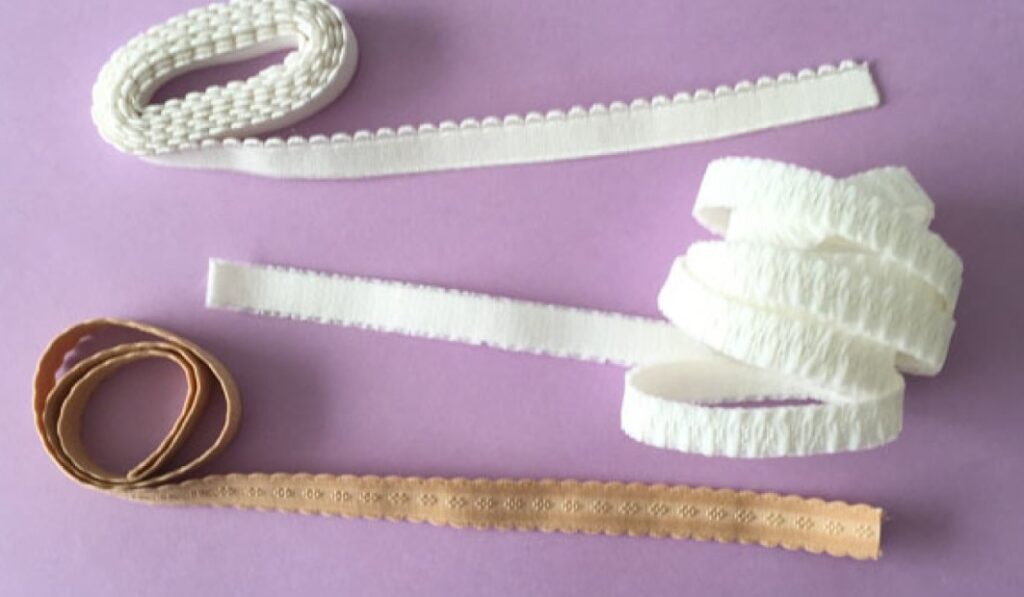
STRETCHING THE LIMITS!
Exploring the Different Types of Elastics for Lingerie and Swimwear
Whether you are a start-up or an established entrepreneur in the intimate apparel industry, you should have a clear idea on each component of lingerie and swimwear to create high-quality and functional apparel. In this post, we will explore elastics, the different types of elastics used in lingerie and swimwear, their properties, and their best use cases.

What are Elastics?
Elastics are narrow strip materials having the ability to stretch and return to its original shape. They are normally made from rubber or synthetic fibers. And can be woven, knitted, or braided into different shapes, sizes and colors.
Why are Elastics Used in Lingerie and Swimwear?
Like any other garments, intimate apparel like lingerie and swimwear require elastics to ensure the garment fits correctly, stays in place, and provides a proper amount of support. They are also used to produce seamless finishes and enhance the garment’s designs.

Different Types of Elastics for Lingerie and Swimwear
- Knitted Elastic: Knitted elastics are soft and stretchy in nature. They are perfect for use in intimate apparel where comfort is a priority. Such as the waistbands of panties or the leg openings of swimsuits.
- Braided Elastic: They are flat elastic that is made by interlocking fibers to create a braided pattern. They do not narrow when stretched. It makes them ideal for use in areas where a consistent level of support is required.
- Woven Elastic: Woven elastics are durable and flat, known for their strength and not rolling or twisting when stretched.
- Fold-Over Elastic: Fold-over elastics are flat and stretchy. They are designed to be folded over the edge of the fabric and stitched in place.
- Plush Elastic: Plush elastics are soft, having excellent stretch and recovery properties. They are good to use where chafing or rubbing may occur, such as the underarms or around the bra band.
- Picot Elastic: They are narrow elastics with decorative edges that can add feminine touch to the garment, making them a popular choice among designers.
- Clear Elastic: Clear elastics are transparent and stretchy in nature. Their see-through quality allows them to remain inconspicuous when used.

Additionally, there are some other elastics available in the market such as hat elastic, lace elastic, corded elastic, elastic thread and more.
Choosing the Right Elastic in Lingerie and Swimwear Design
Each type of elastic has its unique properties and best use cases. Always consider the intended use, the desired level of support, and the type of fabric used before making decisions. For example, clear elastic may be the ideal choice for stretch and recovery in areas of a swimsuit, while plush elastic may be the best choice for a bra band.
Testing different types of elastic and elastic combinations is also a good way to conclude a decision. Moreover, working with skilled professionals can also be invaluable for entrepreneurs and start-ups that need assistance in choosing the right elastic. By doing so, you can not only save time and avoid hassle but also you will be able to create high-quality luxury intimate apparel like lingerie and swimwear that can meet your customers’ needs and preferences.
